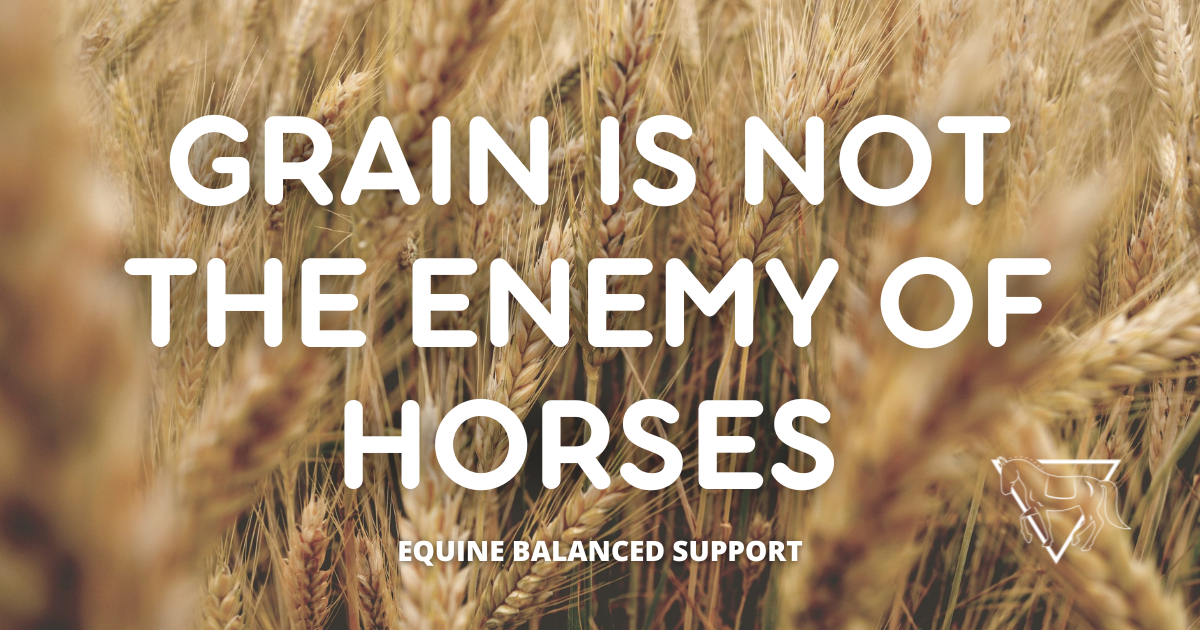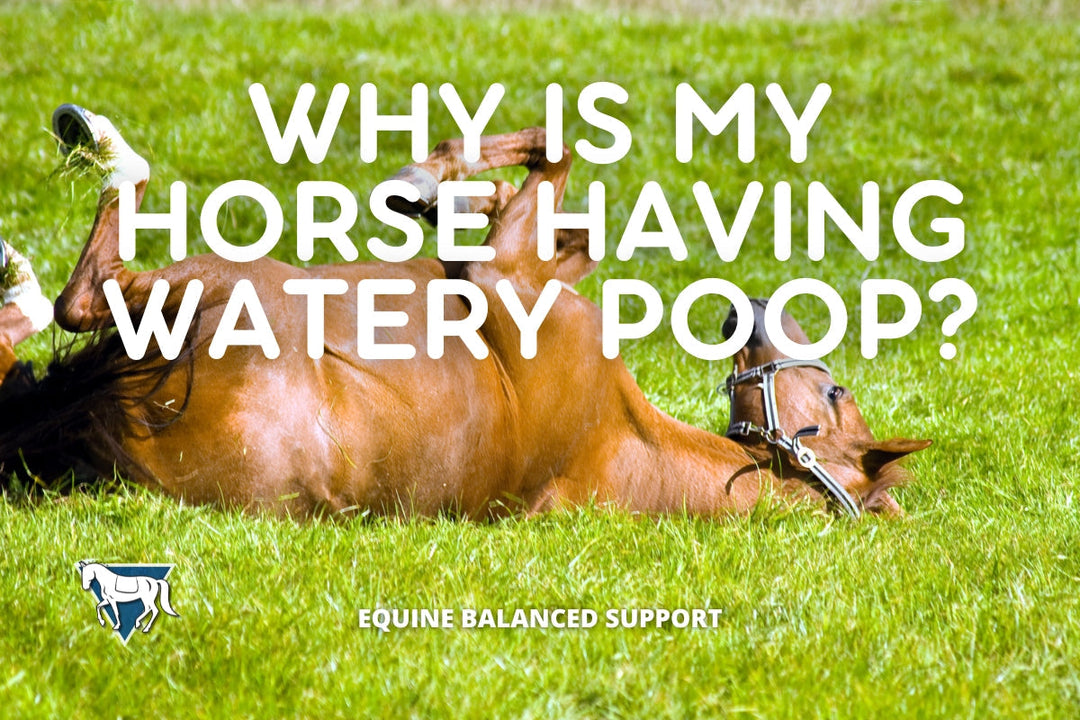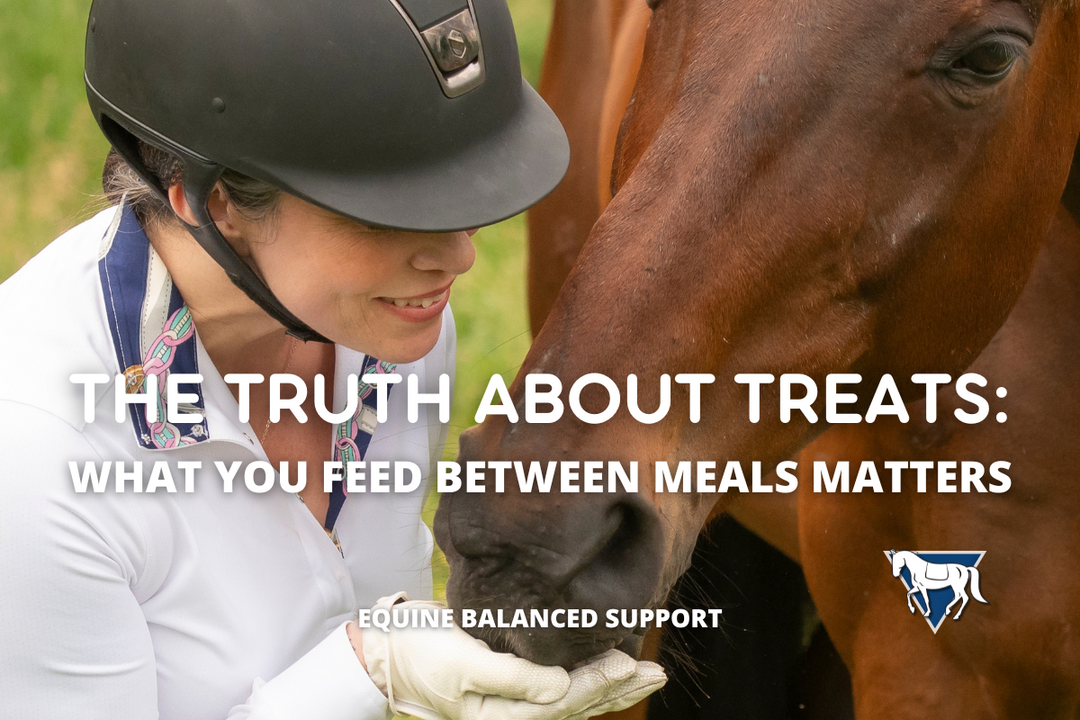Grain in a Forage-First Diet: Myths, Facts & Smart Feeding

Grain Is Not the Enemy of Horses: Debunking Myths and Understanding the Facts
Important Note: At Equine Balanced Support, we ALWAYS recommend beginning with a forage-based diet when possible.
In the world of equine nutrition, few topics generate as much debate as the role of grain in a horse's diet. With growing concerns about equine metabolic disorders, laminitis, and obesity, some equestrians and horse owners have labeled grain as an unnecessary or even harmful component of feeding programs. However, this perspective often oversimplifies a complex issue. When managed appropriately and fed in moderation, grain can be a valuable and beneficial part of a horse’s diet. Here’s why grain is not the enemy of horses, and how to incorporate it responsibly.
Understanding Grain and Its Nutritional Role
Grain is a concentrated source of energy, primarily in the form of carbohydrates, but it also provides protein, vitamins, and minerals depending on the type. Common grains fed to horses include:
- Oats: High in fiber and relatively easy to digest, making them a popular choice.
- Corn: An energy-dense grain, providing more calories per pound than oats.
- Barley: A middle-ground grain in terms of energy density and digestibility.
- Commercial Grain Mixes: These blends often include grains along with essential nutrients to create balanced rations.
Horses are hindgut fermenters designed to derive energy from forages like grass and hay. However, certain situations, such as high-performance activities, lactation, growth, or recovery from illness, increase a horse’s caloric and nutrient demands. In such cases, forage alone may not supply sufficient energy, and grain becomes a useful tool to meet these needs.
The Role of Whole Grains and Organic Options
Beneficial Fiber in Whole Grains
When considering grains for your horse, whole grains like oats and barley retain their natural fiber content, which aids in digestion and slows the release of carbohydrates. In contrast, ground grains or processed feeds may lose some of this beneficial fiber, increasing the glycemic response. Whenever possible, prioritize whole grains to support digestive health and maintain a steady energy supply.
Organic and Non-GMO Options
Choosing organic and non-GMO grains is another way to enhance the quality of your horse’s diet. These options reduce the risk of exposing your horse to residues from synthetic pesticides or herbicides. Glyphosate, for example, is often used as a desiccant on wheat and other crops, which can leave chemical residues in the grain. Over time, chronic exposure to such chemicals may contribute to low-grade systemic inflammation, including in the hooves, potentially exacerbating subtle laminitic conditions.
Dispelling Common Myths About Grain
Myth 1: Grain Causes Laminitis and Founder
Grain itself doesn’t cause laminitis or founder—mismanagement does. Overfeeding grain, particularly in large meals, can overwhelm the horse’s digestive system. When undigested grain reaches the hindgut, it ferments rapidly, leading to a drop in pH (acidosis) and the release of harmful endotoxins, which can trigger laminitis. The key is moderation and proper feeding practices.
Myth 2: Grain Is Unnatural for Horses
While it's true that horses evolved to graze on grasses and other forage, they have also adapted to utilize concentrated energy sources like grains when necessary. Domesticated horses often have workloads and living environments far removed from their natural state, making some level of grain supplementation both practical and beneficial.
Myth 3: All Horses Should Avoid Grain
Not all horses require grain, but for those with higher energy demands, grain can be a critical dietary component. Growing foals, lactating mares, competitive athletes, and horses in heavy work may struggle to maintain condition and performance on forage alone. For these animals, grain can provide the additional calories and nutrients needed to thrive.
The Benefits of Grain When Fed Correctly
- Energy Source for Performance Horses: Essential for horses engaged in intense exercise or competition.
- Support for Growth and Development: Grain-based feeds can provide nutrients forage may lack for growing horses.
- Convenient Weight Management: A calorie-dense option for hard-keepers or horses with high metabolic rates.
- Balanced Nutrition in Commercial Feeds: Fortified with vitamins and minerals to complement forage-only diets.
Feeding Grain Responsibly
- Feed by Weight, Not Volume: Different grains have different densities.
- Start Low and Go Slow: Introduce gradually to avoid digestive upset.
- Divide Grain Into Smaller Meals: No more than 0.5% of body weight per meal.
- Match Grain Type to the Horse’s Needs: Use feeds that fit the horse’s life stage and workload.
- Pair Grain With Forage: Always feed with or after hay/grazing to slow digestion.
- Monitor Body Condition and Performance: Regularly adjust based on changes in health and activity.
When Grain Isn’t Appropriate
Horses with insulin resistance, equine metabolic syndrome (EMS), or a history of laminitis may need limited or no grain. In these cases, low-sugar forage, beet pulp, or specially formulated low-starch feeds are often better choices. Always consult a veterinarian or equine nutritionist for tailored recommendations.
Grain-Based Carriers in Supplement Formulas
Many high-quality commercial supplements use minimal amounts of grain byproducts like wheat middlings or distillers dried grains with solubles to create a cost-effective pellet. These ingredients are not the same as feeding a scoop of whole grain—they serve as binders and carriers, not primary energy sources. When chosen carefully, these formulas can be a smart option for horses needing balanced nutrition without excess starch.
For example, MVP Exceed 6-Way and MVP Natural E 5000 both use grain-based carriers in very small amounts while delivering high-value nutrients for performance and recovery.
Similarly, options like Mega Cell and Mega Mag provide foundational support with controlled carbohydrate levels. Even calming and hormonal support blends such as Magnesium 5,000 and Levelor use minimal carriers while focusing on bioavailable actives.
Important Note: At Equine Balanced Support, we always recommend starting with a forage-first approach. Grain can be a useful tool—but should never replace the foundation of high-quality hay and turnout access.
Conclusion
Grain is not the villain it’s often made out to be—it’s a tool that, when used correctly, can enhance a horse’s health, performance, and overall well-being. The key lies in understanding your horse’s unique nutritional needs and feeding grain appropriately. By doing so, you can take advantage of the benefits grain offers while avoiding potential pitfalls, ensuring your horse leads a healthy and balanced life.





Leave a comment